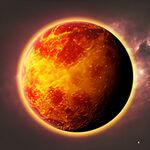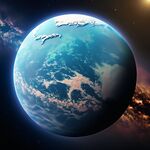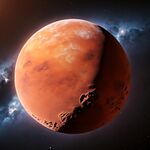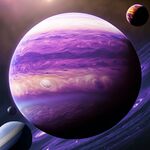Olympia System
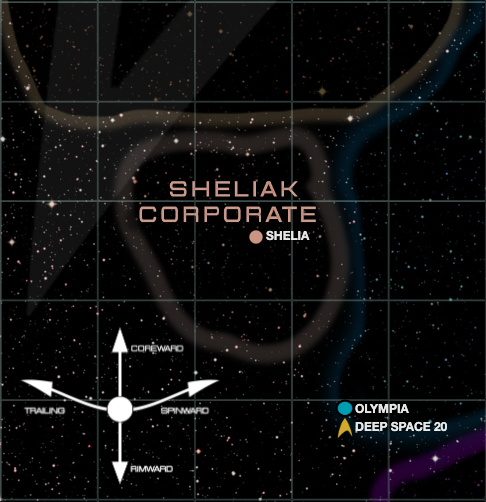
| |
| Olympia System | |
| Powers | |
| Major powers | |
| Points of interest | |
| Places | |
| Template:Region | |
The Olympia System is a star system on the edge of Federation space in the Olympia Sector, which is in the far rimward trailing frontier of the Alpha Quadrant. The system consists of the star, Olympia, five major planets, and four minor planets. It is home to Olympia Station, as well as a deuterium refining facility. First explored by the starship Arcturus in the 2350s, the system was named for the ill-fated USS Olympia, which was lost in 2371, when Starfleet began construction of a fueling depot in 2374, a year after the wreckage of the Olympia was discovered. The worlds in the Olympia system are named after the nine Muses of Greek Mythology.
History
The Olympia System, originally designated M365J, was first explored by the starship Arcturus in 2355. The second planet was identified as a possible site for colonization and a follow up survey was conducted two years later by the science vessel Sagan. At the time, relations with both the Tamarians and Sheliak were near non-existent, and so the system was flagged for future expansion but not looked at more closely until the 2370s.
During the Dominion War, Starfleet was in desperate need of additional fueling facilities, especially ones far enough behind their defensive lines to not need round-the-clock protection. M365J was identified as a good site for a deuterium refinery, as it could back-fill the fuel needs of stations closer to the war itself, and so a facility was built in 2374 orbiting the gas giant in the system. Now that the system was important enough to have a Starfleet facility, it was finally named the Olympia system, in honor of the crew of the starship Olympia, the wreck of which was discovered by the crew of the Defiant that same year.
In 2379, the Federation Bureau of Colonization authorized a colonial charter for Olympia II, also known as Clio. By 2380, there were five-thousand colonists living there. A remote ocean world, the colony has remained small into the 25th century and now supports a population of 10,000.
It was not until 2400 that Starfleet decided to finally establish a starbase in the system, to provide a launching point for future deep space missions and to protect the Clio colony. Over the course of the year, a Spacedock I-class station was relocated into orbit of Olympia II and designated Deep Space 20, also known as Olympia Station.
Major Planets
Calliope (Olympia I)
A class B geomorteus world, Calliope orbits so close to Olympia that its surface remains partially molten. Initial surveys revealed an iron-rich crust, but no other minerals worth mining. As of 2401, no probes or stations orbit Calliope, but Starfleet is considering using this world to test various heat-resistant shielding protocols.
Clio (Olympia II)
Clio is a Class O pelagic world, which has 85% of its surface covered in water. Land on this world, very unusually, is concentrated in a single continent centered on the equator. This continent is roughly twice the size of Australia on Earth, and has varied ecosystems. There is a multi-species colony on this world, with a population of approximately 10,000, and there are multiple Starfleet and Federation research stations located here. Olympia Station orbits in a geosynchronous position above the Clio colony.
Euterpe (Olympia III)
Euterpe is a cold, dry world with a thin atmosphere of mostly carbon dioxide. While considered a potential candidate for terraforming, this Class-K world has not received much attention, thanks to the presence of the habitable Clio in the same system.
Thalia (Olympia IV)
Thalia is a massive Class T ultragiant world, just under the mass necessary for deuterium fusion to be possible and for it to become a brown dwarf. This world's atmosphere is almost entirely composed of hydrogen, which is why a deuterium refinery was installed here. This automated facility siphons hydrogen from the planet and then sends it via drone to remote refueling stations and to Olympia Station. Thalia has 97 moons of various sizes.
Minor Planets
The Olympia system contains five rocky ice dwarf worlds that orbit beyond Thalia:
- Erato (Olympia V)
- Polyhymnia (Olympia VI)
- Terpsichore (Olympia VII)
- Urania (Olympia VIII)
- Euterpe (Olympia IX)
